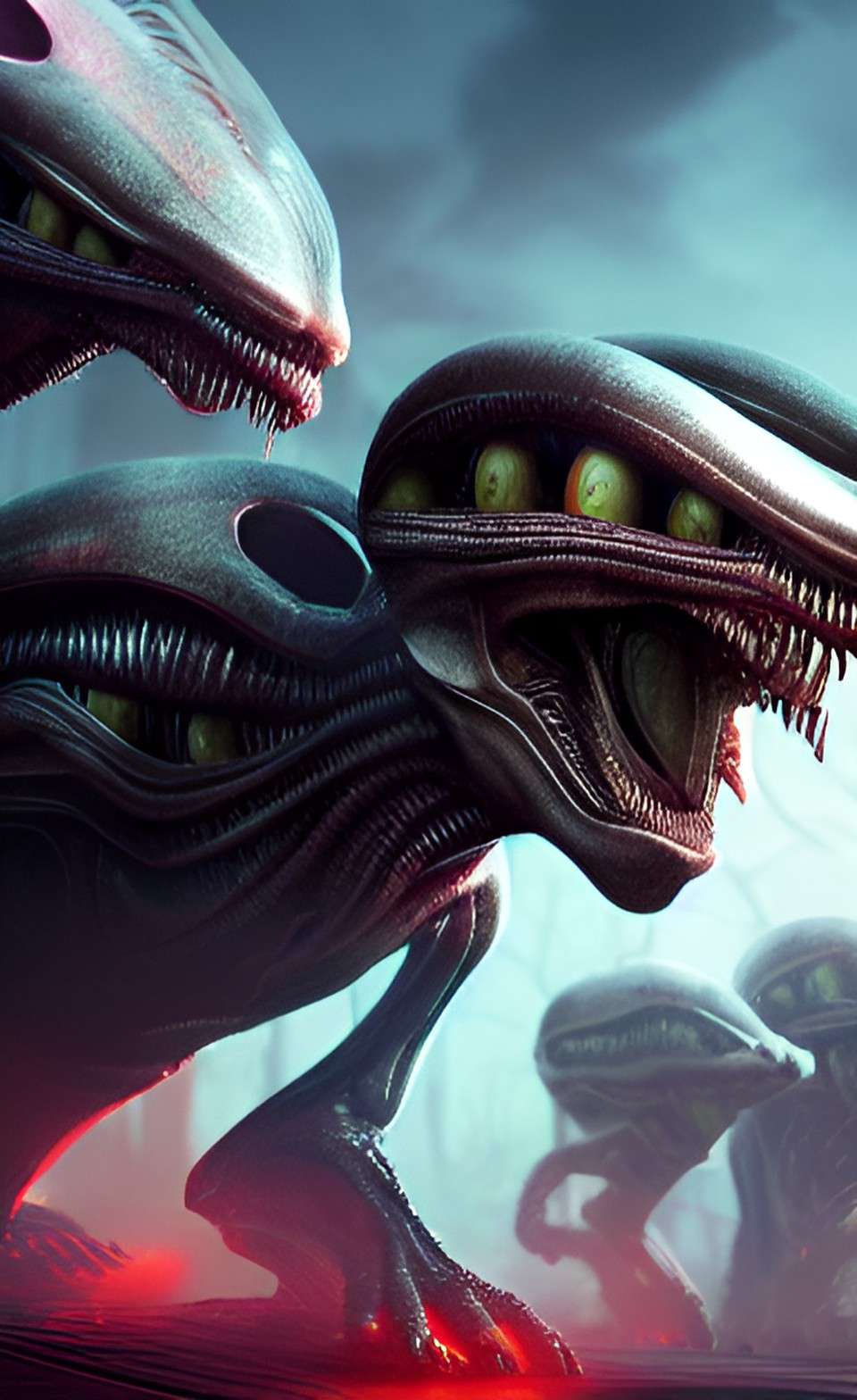T.F.T.H. Parasite
Basic Information
Anatomy
The T.F.T.H Parasite (The Flesh That Hates Parasite) is a molecular alien parasite that infects the host through simple contact with any fleshy growth or creature that is infected with the parasite. It looks to be a tiny worm covered in quills and little sensors, filled with parasitic DNA. To the naked eye this parasite is pretty much invisible, however the flesh it creates out of bio material, mostly living organisms, always contains a reddish-purple hue that forms into a pod-like shape and covers most surfaces. When the parasite grows within an infected organism, they will contort and twist the host to favor a far more savage, beast-like look until they are hardly recognizable, often sprouting many teeth, eyes, and mouths in places where there used to be none.
Biological Traits
There have been noticeable differences in the parasite at times that causes it to do different things to the host it infects. This seems to mostly affect what the creature will turn into and what it will do, rather than its appearance changing from the motif of gorey reds and purples. Often creatures created at the front of a spreading flesh growth are more tailored to spreading the parasite than they are for combat, while parasites in areas where the growth has been for a long time tend to see tougher creatures guarding the premises from anything that manages to be immune to the growth.
Genetics and Reproduction
The parasite spreads by infecting cells around it with its DNA which contort and transform the cells into the fleshy growths that spawn more parasites, which gestate within the flesh. Since the flesh grows at a very rapid pace, gestation is almost instantaneous in most cases.
Growth Rate & Stages
The flesh grows over surfaces surrounding it quite rapidly, allowing for more parasites to spread out further. While the growth rate within organic creatures is almost immediate, they can grow by themselves at a slower pace as the flesh creeps across the environment surrounding it. It is at its slowest when the flesh is crossing non-organic material like metal. The stage that the flesh is in is directly proportional to the amount of flesh currently in the area, with the most extreme being entire planets covered in the growth, which represents the final stage.
Ecology and Habitats
As long as there is organic material to consume, the flesh will continue to grow. Even if there isn't any, it will very slowly consume the surrounding area anyways unless attacked by some method of clearing the flesh. That being said, there is no environment the flesh can not take over, unless it is so extreme that the flesh freezes or melts.
Dietary Needs and Habits
All the flesh requires is organic material to mutate by contact, and doesn't require anything else aside from this. Due to how quick the asexual reproduction of the growth is, bordering on anomalous due to its speed, the flesh has no real needs in order to grow aside from protection from the elements.
Biological Cycle
As time moves, the flesh left behind by the newest layer that borders areas that have yet to be infected begins to mutate and form pod-like growths where aberrations are created by the flesh. More often than not they remain within the area to protect the growths, but sometimes they are created in order to be sent out to infect new areas and organisms.
Additional Information
Geographic Origin and Distribution
Currently their distribution is unknown. It would be easier to track if planets that suffer from this parasite were to stop mysteriously disappearing after a few months. Currently there is an estimated total of a few hundred thousand planets that have disappeared, leading people to speculate that the distribution of this parasite is galaxy spanning and rather large.
Average Intelligence
Currently it is understood that the fleshy growths, and in specific the parasite, have no real intelligence past an inherent goal of spreading itself as far as possible, which it does very effectively. Later stages of growth appear to possess some form of heightened intelligence, but this does not seem to be a product of the parasite itself.
Perception and Sensory Capabilities
While creatures created by this parasite have a multitude of senses that they can rely on, the parasite itself has no real senses outside of the tendrils that hang from its body.
Lifespan
Unknown
Average Height
Varies
Average Length
Varies
Average Physique
Creatures range from simple bugs that spread out and infect more wildlife with the parasite to ultra massive creatures that are planet sized--which are thought to be the missing planets that were once infected with the parasite--so the average physique of these creatures are hard to gauge. What is important is that they simply touch another piece of organic matter, so toughness isn't a big thing for them as much as speed is.
Body Tint, Colouring and Marking
Most of the flesh generated from this parasitic entity tends to be a molded reddish-purple hue, giving it a very gorey look. The flesh also tends to sport a rigid muscle texture which gives it both a much more alien look and feel, almost like oiled leather. Of course very few know of this, since touching the flesh means an excruciating death over the course of a day.
Remove these ads. Join the Worldbuilders Guild









Comments